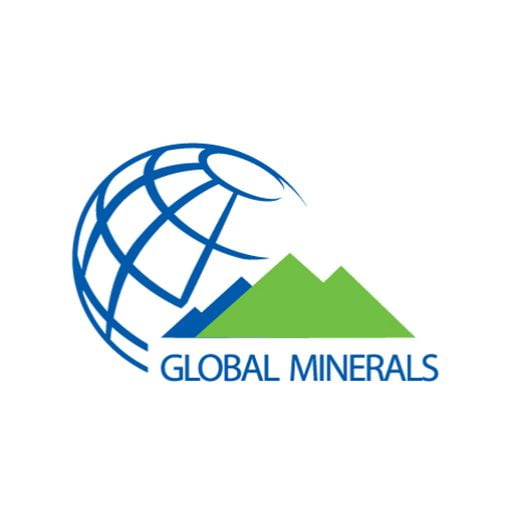Calcium carbonate powder is gradually becoming an indispensable part of life when it becomes an essential source of raw materials for many industrial applications serving the world’s existence, typically the plastic industry. CaCO3 powder, of course, comes from raw materials that are quarried from natural stone quarries. However, for the finished product to be ultra-fine or precipitated CaCO3 powder for industries, the processing process at the factory needs to ensure professional steps.
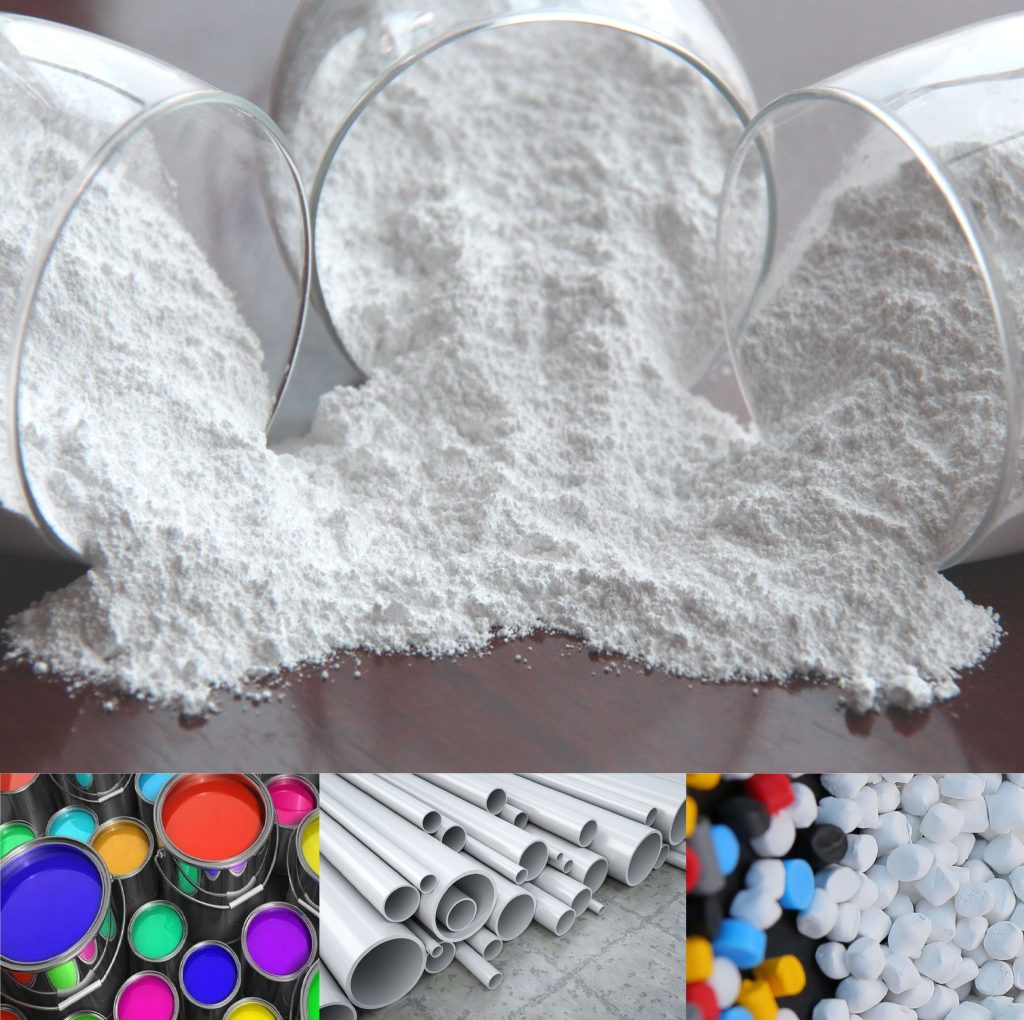
Some notes on essential steps:
Stone Selection & Stone Washing:
- This is the most important step to ensure the output quality of the CaCO3 powder, and the entire production process takes place continuously without interruption.
- Stone materials are tested and screened in three steps: Before being transported to the factory – When brought to the factory (checked with a whiteness meter) & before being put into production.
- The returned stone is washed and left to dry before entering the warehouse.
- Stone storage must be clean, free of sand or dirt to avoid impurities.
- The stone meets the inspection standards for production, including the following characteristics: No cover, seam, no soil, and impurities, moderate size.

Classification of original white stone
At Global Minerals’ factories, after the stone is selected and meets the testing factors, we conduct classification and dissection to choose which type of stone is suitable for each specific application. Customers have absolute peace of mind when ordering CaCO3 stone powder products.
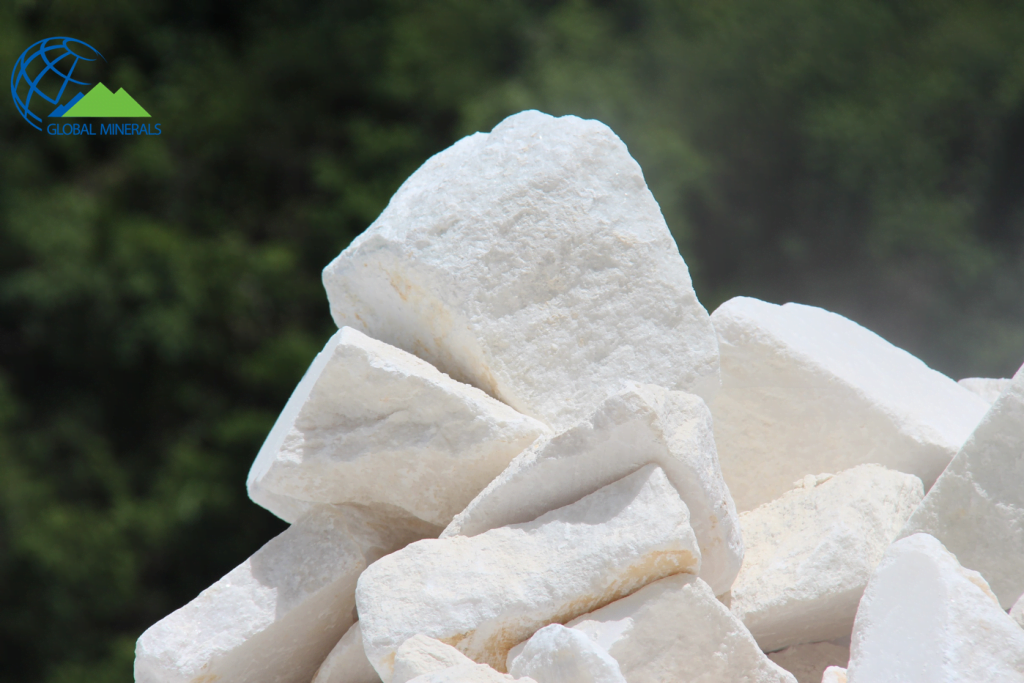
- With large rock salt base types: Having some advantages such as low hardness, softness, ease to grind, low silicon content, high purity, high whiteness, it will be suitable for plastic industry (profile bar, pipe, etc.) white plastic), high-grade paint and production of filler for the film.
- Middle salt rock origin: Harder than large rock salt, can be sawed slab, high value, porcelain white color, suitable for paint and ceramic production.
- Small rock salt base: With the highest hardness, it is not used to grind super small stone powder, but mainly for cars and slabs. Not suitable for PVC compound, filler for film…
Technology at Global Minerals factories
Global 1:
– Number of machines: 2 vertical mills
– Total capacity: 5200 – 5500 tons/month.

Global 2:
– Number of machines: 1 ball mill + 2 vertical mills + 3 acid coating machines.
– Capacity: 8,000 – 9,500 tons/month
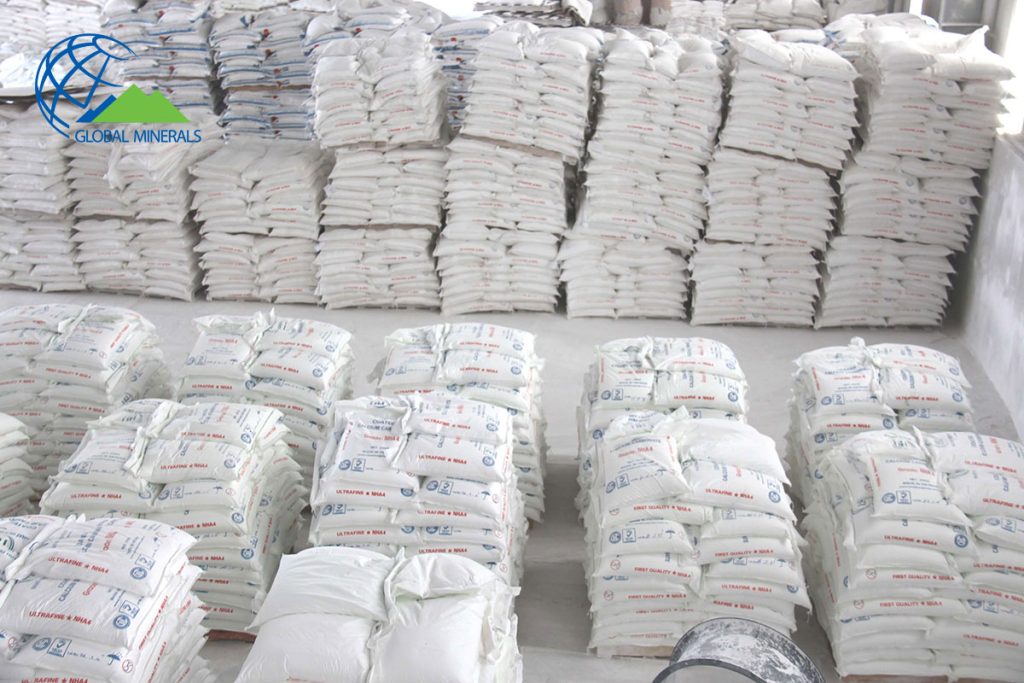
Thanh Xuan (stone powder):
– Number of machines: 2 vertical mills.
– Capacity: 3,000 – 4,000 tons/month

Crushing and Separation Stage
The stone is passed through the conveyor belt to the magnets from the hammer crusher to attract all the iron particles (if any). Using the excavator to pour into the silo, run through the hammer crusher to bring the stone smaller.
After removing all the iron particles, the rock is put into rotating sieves for separation.
The rotary sieve has a hexagonal tubular shape, with a diameter of 1.5 to 2m and a length of 8 to 12m, depending on the capacity of the hammer mill. Inside, the rotary mesh screen is framed and assembled into layers corresponding to each product type.
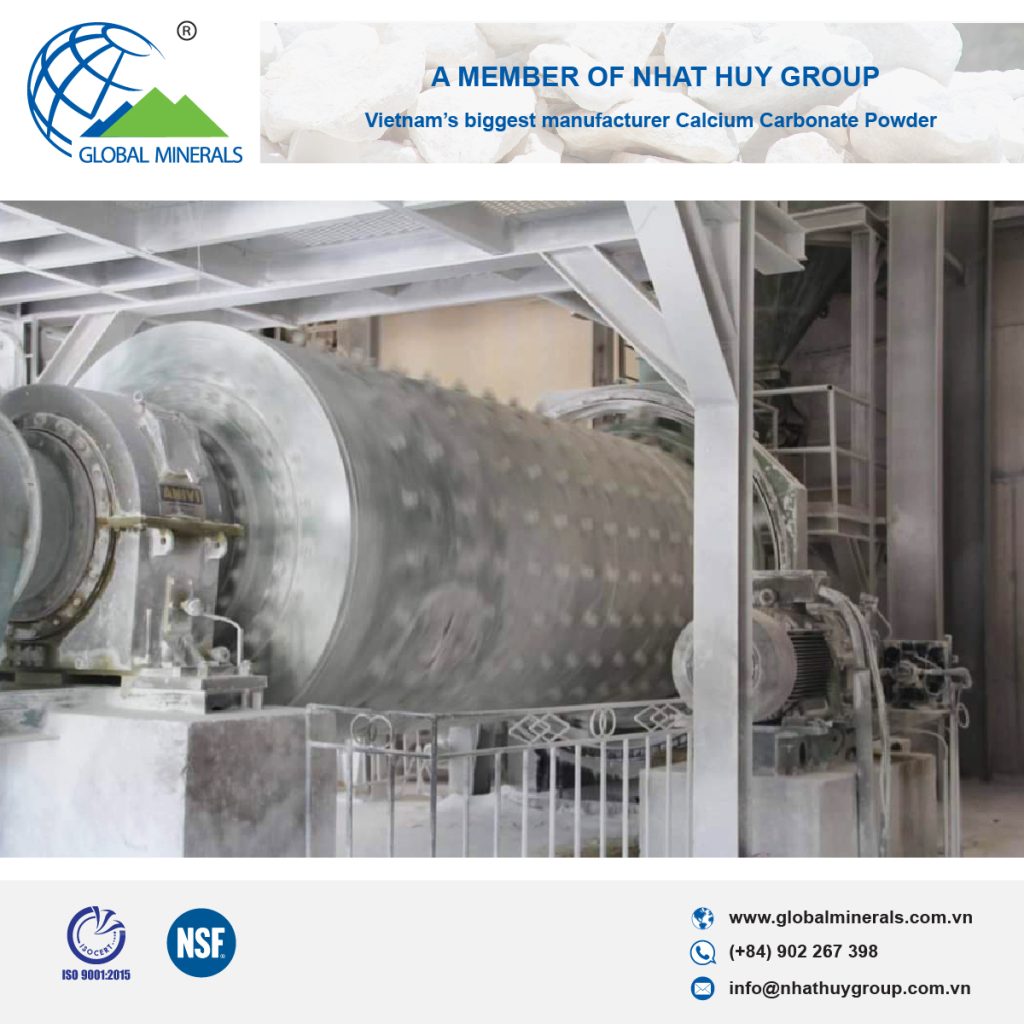
Packing Stage
All products are taken to separate containers on each sieve floor at the bottom. Products that meet the requirements will be put into packaging.
Under each container, the product is weighed and loaded through a bagging machine and then placed on a pallet. Then put in the position of each type of finished product in the workshop.

Global Minerals stone powder products
Visit our factory to learn the details of the CaCO3 powder production process at:
Global Minerals JSC
Address: Quy Hop Industrial Zone, Quy Hop District, Nghe An province, Vietnam
Phone: +8490 2267 398
Email: info@nhathuygroup.com.vn
Website: https://globalminerals.com.vn/
